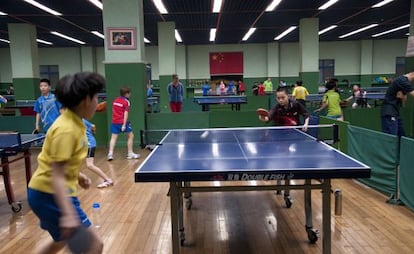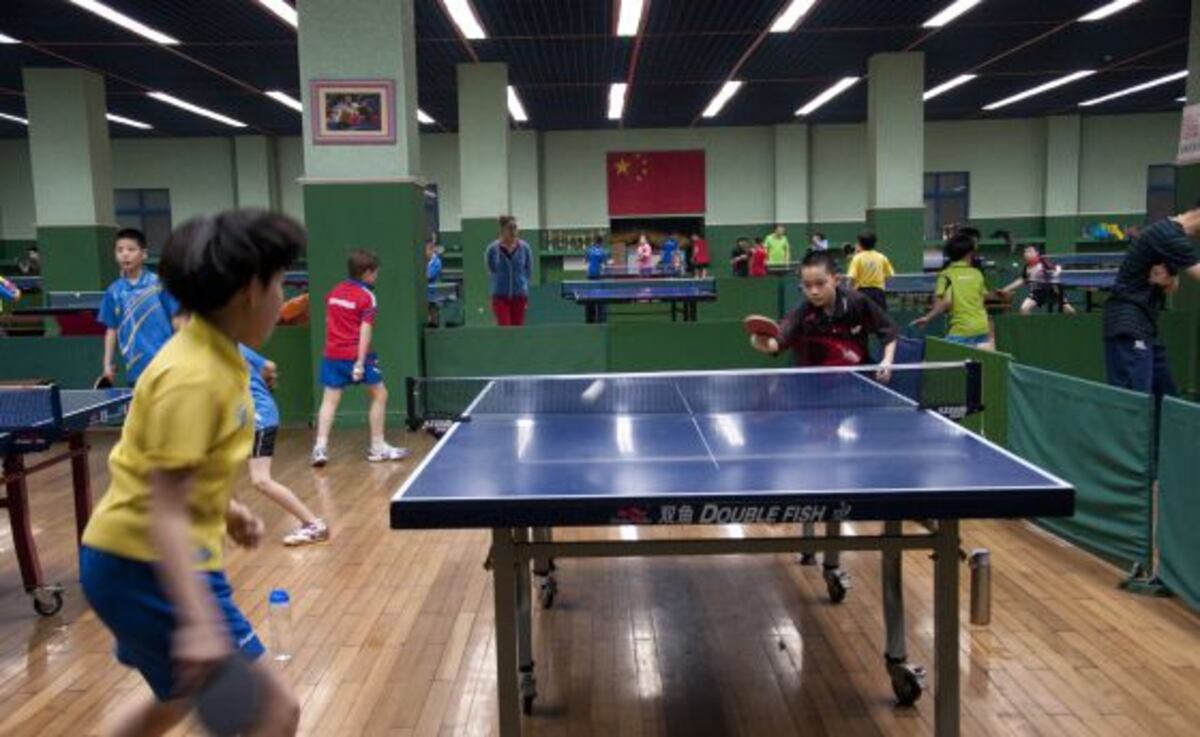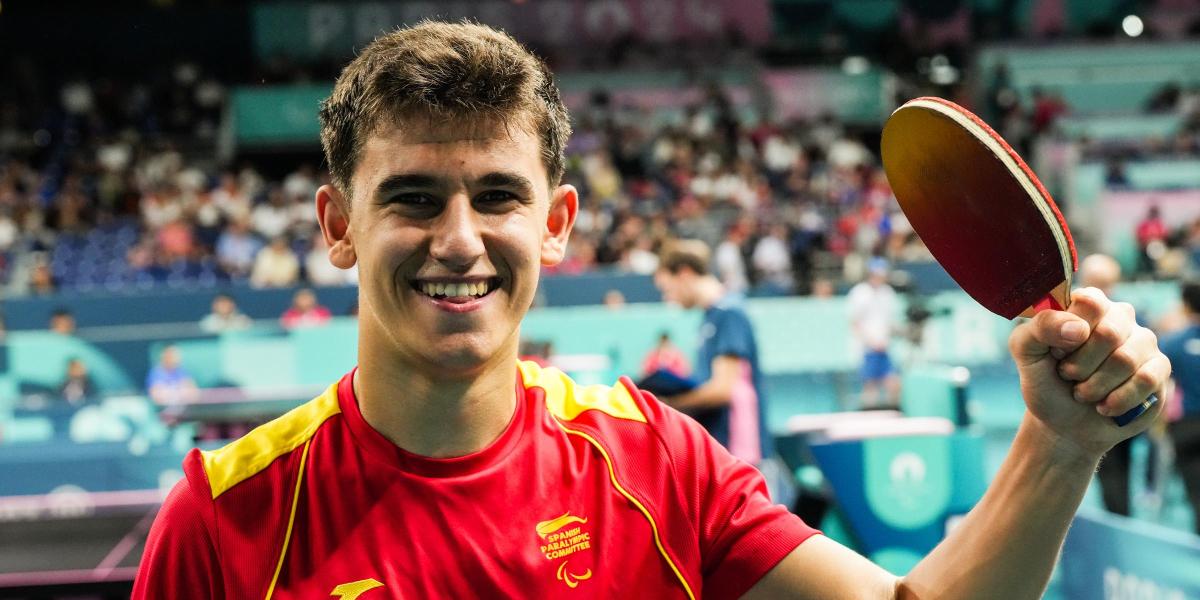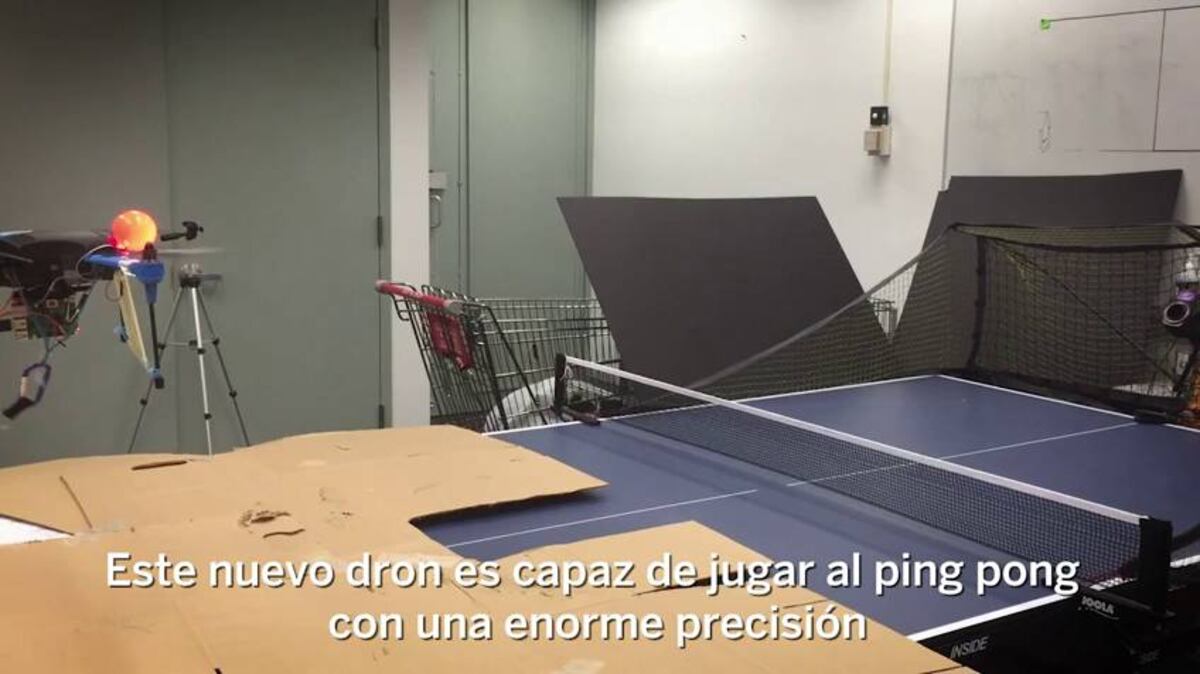
At 10, Guo Aobo stoically resists the onslaught of a Russian boy who almost doubles his age and finally manages to win the point with a powerful setback. His coach congratulates him but reminds him that he must maintain the balance of his legs before a play like the previous one. The boy nods, dries the sweat from his forehead and gets again.
Guo trains al ping-pong For two years and has just become a semiprofessional player. Under this new condition, from now on he will have to live in the residence of the Shichahai Sports School, located in the center of Beijing, where he will train almost daily with other boys of the same level to fulfill his dream: to be world champion. Shichahai is one of the eight state formation schools of elite athletes in the Chinese capital. Founded in 1958, specialized in ping-pongboxing, taekwondo, golf, bádminton, fencing, gymnastics and martial arts. 46 world champions have left their facilities, seven of them Olympic golds. Their portraits and achievements preside over training rooms, where dozens of children and adolescents strive daily for a day to be like them under the watchful eye of the coaches.
Children receive strict sports and academic training
“We carry out a general and continuous evaluation. We must see if the child understands well the coach's instructions, his physical conditions and, above all, that they have a clean look,” Gu Yunfeng explains to this newspaper, one of the instructors of ping-pong. Students are subject to strict routine: four hours of academic training in the morning and four training in the afternoon, even some more if an important championship approaches.
The extensive network of sports schools managed by the State – more than 300 – are the key to Chinese success in this area. Although the government has recently advocated to promote sports education in conventional primary and secondary schools, 98% of the country's athletes that reach the top of the podium come from these centers, according to official data. Created following the Soviet Sports Development Model, the chosen ones begin their training at a very early age – in Shichahai they enter from the age of six – and their permanence in school will depend on their performance. The economic development of the Asian giant has also had an impact on the improvement of these centers and the undoubted take -off of the country as a sports power: if in the Seoul Olympic Games of 1988 China achieved five golds, in London 2012 were 38.
The permanence of the kids in the centers depends on their performance
Shichahai has 700 students in total and every year a hundred more enter the detriment of others who decide or must leave the center. Some get their pass through the quota established by the Beijing Sports Office, in which case they do not pay the registration by enjoying a government scholarship. The rest of the places are assigned through a public call and after overcoming several academic and sports evidence. The cost for the latter is 35,000 yuan per year (about 5,200 euros). The school also has a team of Cazatalantos that runs through the country to sign promises from outside the capital.
Despite the illusion with which they enter and how hard they train, the reality is that few students will become world champions and will be able to live from sports. This is precisely one of the school challenges, according to its responsible, Shi Fenghua. “Our center before had very simple objectives, but now we must train both athletes and those who will not be.” One of the biggest problems derived from this training system lies in the difficulties in redirecting the lives of those students who have been isolated from society and fail to reach the cusp in their bouquet.
“The reality is that few students will become world champions,” they say at school
The case of Gimnasta Zhang Shangwu is paradigmatic of what is a life dedicated exclusively to the sport that was complicated. He won two golds in 2001 at the Beijing University Games and was part of the national team until 2003, when an Achilles heel injury forced him to leave. Given the inability to find another job, Zhang ended up turning four years in prison for robbery and begging in the Metro of the Chinese capital. When his case came to light, the extravagant Chinese millionaire Chen Guangbiao decided to hire him as his personal coach. “In China there are many athletes who have gone through the same experience as me, but I am one of the lucky ones who attracted the attention of the media and society,” Zhang explained.
In Shichahai all students receive, from 15 years, lessons on personal and professional planning where they are taught to manage their future. Shi defends that the school “does not leave any abandoned student” and tries to find professional exits, either in a conventional university – where high -level athletes have special access – or specific professional training. Many of the center's coaches are, in fact, former students.
“We try to instill that a good athlete is not a technical machine, that knowing how to play well is not enough. More than the final result, the important thing is the process of putting into practice everything they have taught you and enjoying the sport,” Gu. The coaches, together with a large team of doctors and psychologists, claim to help students take importance from competitiveness and pressure to win. “The individual hero does not exist, only the collective,” can be read in one of the center's pavilions.
The little guo, however, insists that he wants to become like Zhang Jike, the current world champion and Olympic of ping-pong. His coach points out that he is still very early to know if he or any of his classmates will become his relief: “Everything is possible, the undoubted thing is that there is spare talent and potential.”



